 By Independent News Roundup
By Independent News Roundup
Nicolas Hulscher, MPHJun 20, 2025 - By Nicolas Hulscher, MPH
As the new U.S. Department of Health and Human Services (HHS) administration launches its long-overdue investigation into childhood hyper-vaccination—flagged as a potential driver of the chronic disease epidemic in the MAHA Report—a large body of peer-reviewed science already makes the case clear:
Hyper-vaccination is a likely culprit—and at the center of the evidence is a well-documented neurotoxin: aluminum.
The CDC-funded study titled, Association Between Aluminum Exposure From Vaccines Before Age 24 Months and Persistent Asthma at Age 24 to 59 Months, published in the journal Academic Pediatrics, analyzed data from 326,991 children in the Vaccine Safety Datalink.
Researchers calculated cumulative aluminum exposure from vaccines before 24 months of age and assessed its association with persistent asthma diagnosed between ages 2 and 5. Key covariates were adjusted, including sex, race, eczema, prematurity, medical complexity, and healthcare utilization.

Here’s what they found:
Brain tissue analyses, population-level data, and experimental evidence indicate neurotoxin aluminum vaccine adjuvants are strongly linked to autism.
Boretti: Aluminum adjuvants in vaccines is a plausible explanation for autism based on ecological studies, animal models, brain tissue analysis, and biological mechanisms.
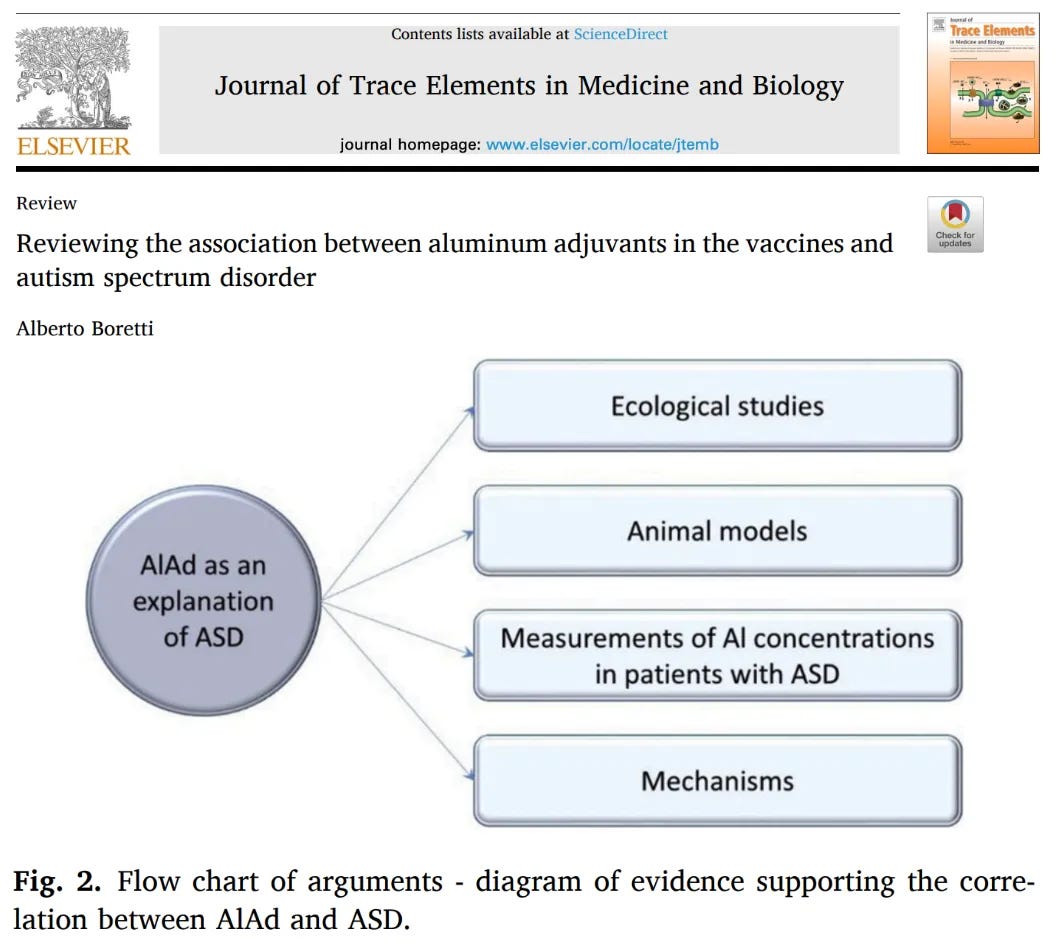
Tomljenovic & Shaw: A strong correlation (r=0.92, p<0.0001) exists between increased aluminum adjuvant exposure and the rise in ASD prevalence over two decades.
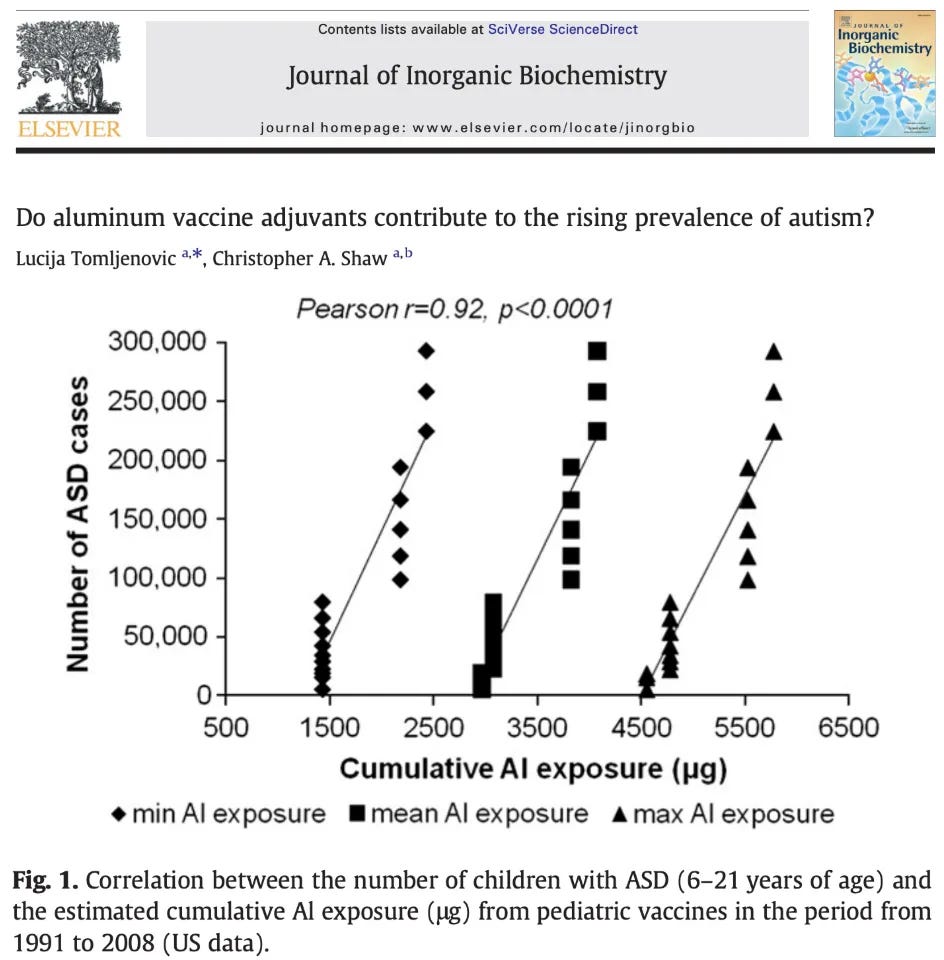
Mold et al: Found extraordinarily high aluminum levels in autistic brains, embedded in neurons, immune cells, and brain tissue.
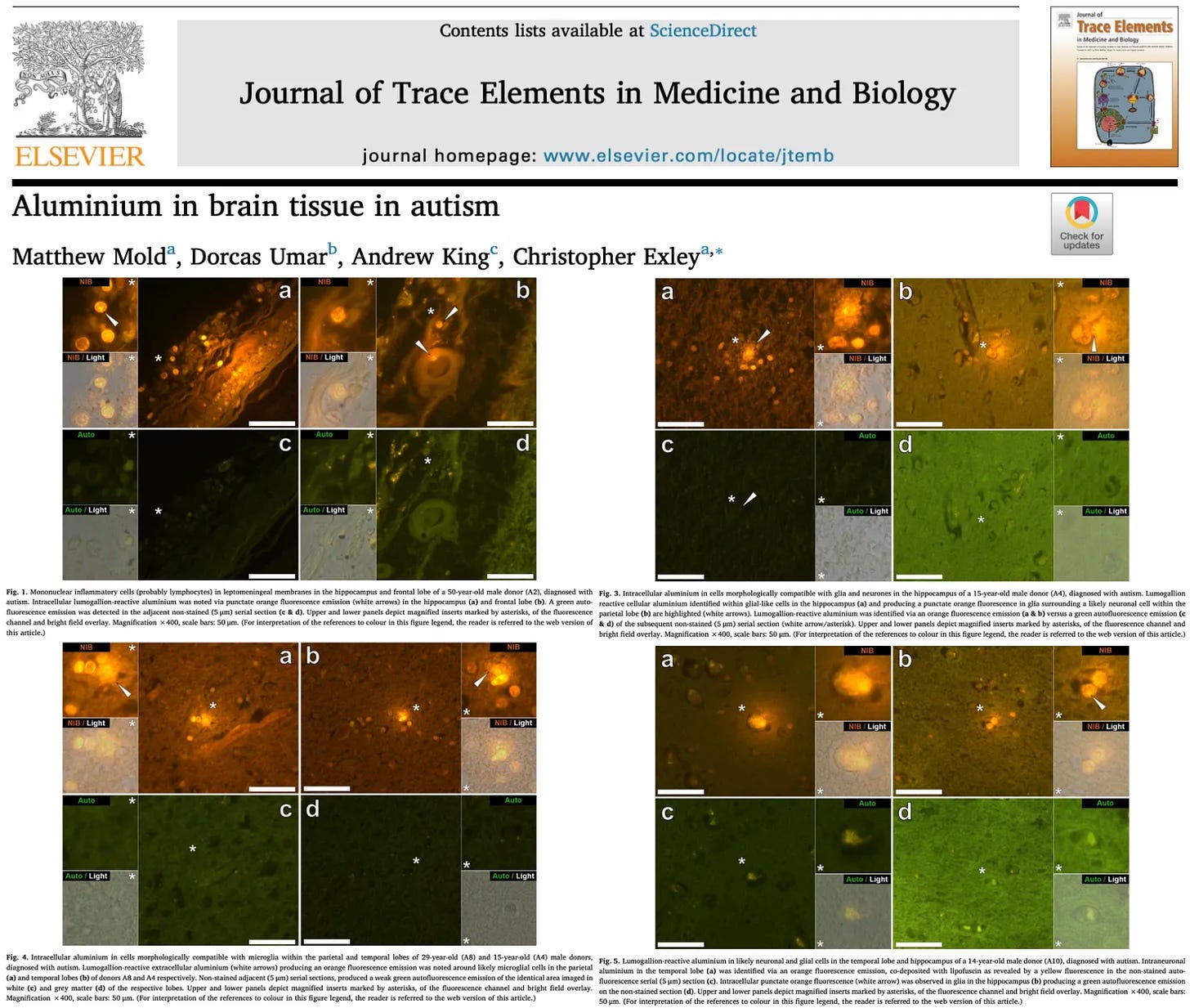
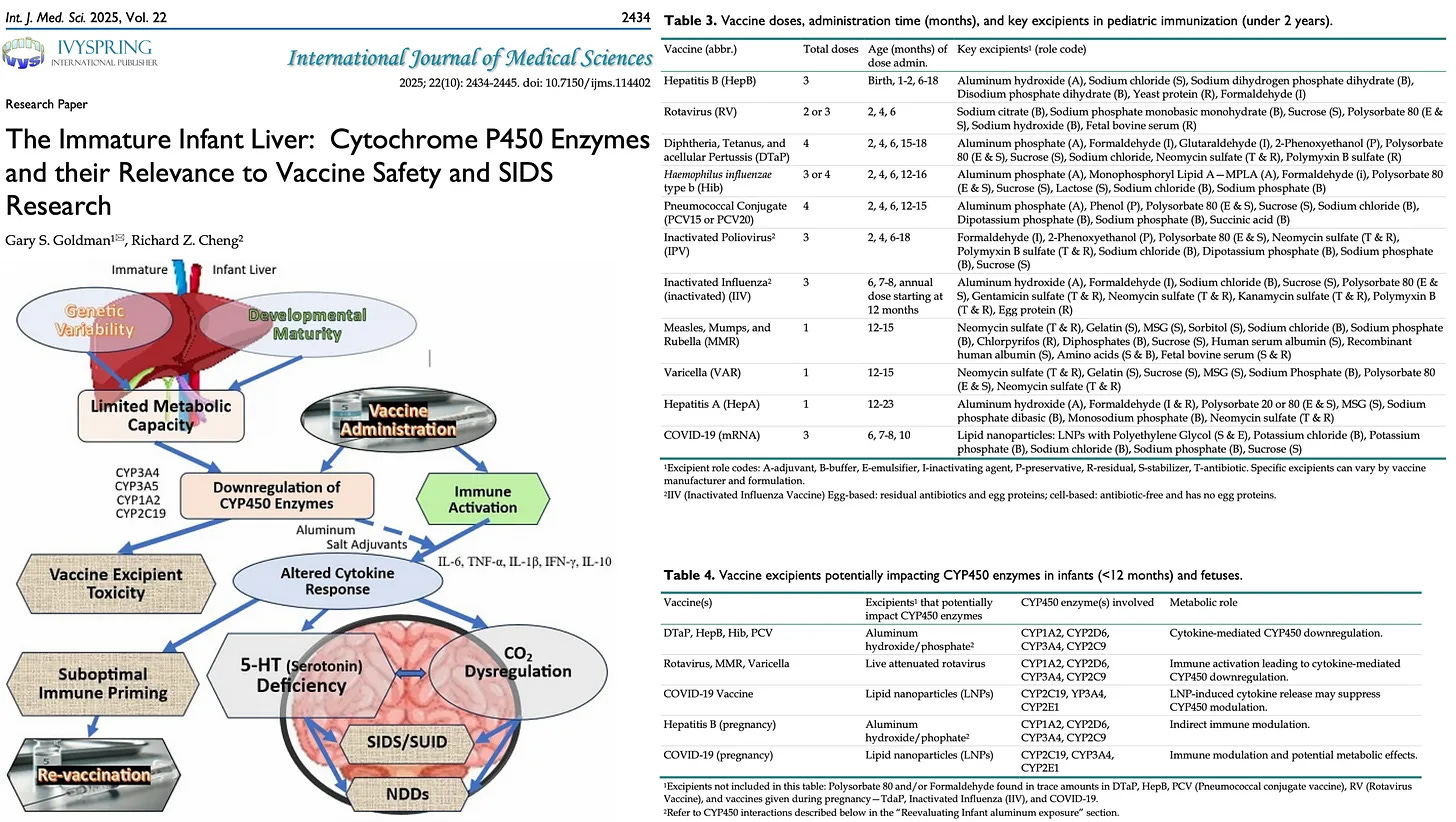
A study by Goldman and Cheng proposes a biologically plausible mechanism linking aluminum vaccine excipients to sudden infant death syndrome (SIDS):
According to Physicians for Informed Consent, up to 22 doses of aluminum-containing vaccines are administered from birth to 18 years of age:
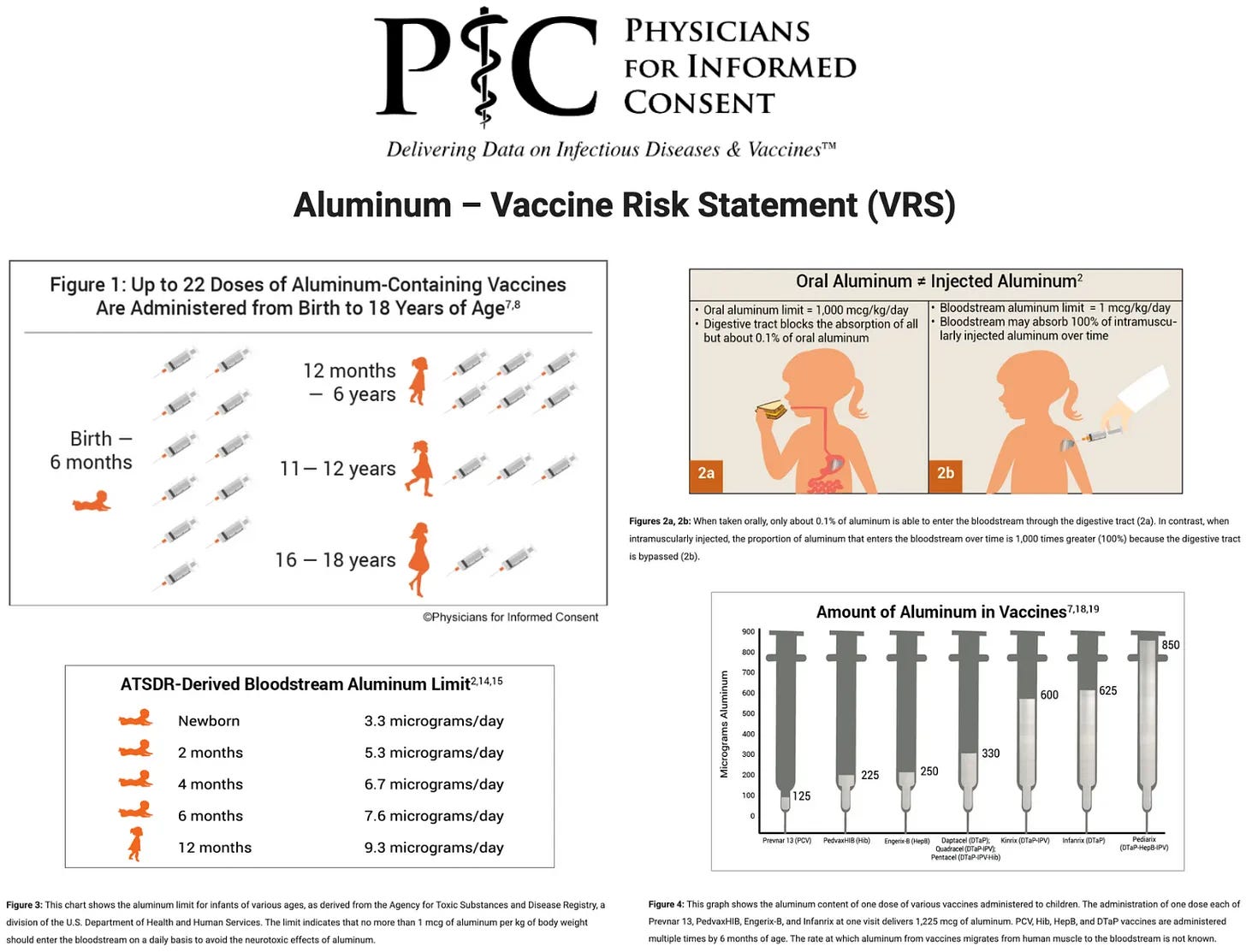
The U.S. Department of Health and Human Services recognizes aluminum as a known neurotoxin and the FDA has previously warned about the risks of aluminum toxicity in infants and children.
Given the existing body of evidence, initiating the removal of aluminum from childhood vaccines is a prudent and necessary step toward reversing the chronic disease epidemic.
Epidemiologist and Foundation Administrator, McCullough Foundation
www.mcculloughfnd.org
